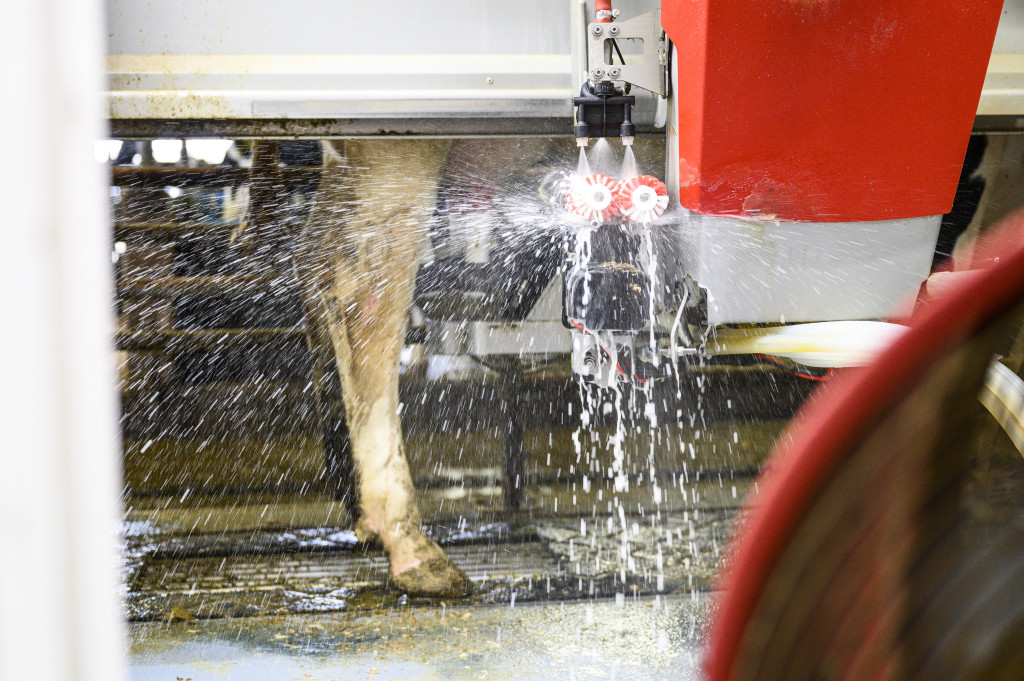H5N1 Virus Found in Dairy Worker: No Current Threat Detected
H5N1 Virus Detected in Dairy Worker: What You Need to Know
The news of a dairy worker testing positive for the H5N1 virus has sent ripples of anxiety through health communities and everyday folks alike. But before you panic and start hoarding toilet paper again, let’s break things down. What does this mean for us? Is there a significant threat out there, or is it just another headline to digest and move on from? In this article, we will explore what H5N1 is, why this particular case is noteworthy, and what precautions, if any, we should be taking.
What is H5N1?
H5N1 is a subtype of the influenza A virus, and it’s primarily known as avian influenza or bird flu. Since its emergence, it has been a source of concern for public health officials. Here are some key points about H5N1:
- Transmission: It primarily spreads among birds, but it can infect humans and other animals, especially if they come into direct contact with infected poultry.
- Severity: While it has a high mortality rate in humans (over 50% in reported cases), it is not as easily transmitted between people, which makes an outbreak less likely.
- Previous Outbreaks: There have been sporadic outbreaks in the past, mainly in Asia and parts of Africa, leading to full-tilt monitoring and preventive measures.
So, when we hear about H5N1, it’s like hearing about that one person in your friend group who always manages to bring the virus to your hangouts—potentially dangerous but not very contagious.
The Dairy Worker Case
Recently, a dairy worker was found to have been infected with the H5N1 virus. This incident has raised eyebrows and set the alarm bells ringing for several reasons. However, before you hit that panic button, let’s delve into the particulars of this case.
Background of the Worker
This dairy worker was exposed to infected birds and other animals, a critical detail in understanding how they contracted the virus. Thankfully, there are a few reassuring aspects regarding this case:
- Isolation: The virus was isolated from the worker, but there’s been no evidence suggesting that it has entered the wider population. In other words, it’s not going viral—pun intended!
- Containment Efforts: Health authorities have quickly jumped in with thorough examinations, monitoring, and preventive measures.
Current Risk Assessment
So, what’s the takeaway here? Are you safe to sip that latte at your local café? According to health experts, the immediate risks stemming from this case are minimal.
Lack of Circulation
The virus does not appear to be circulating in nature anymore. That’s a massive relief and a point worth amplifying. Unlike other viral threats like COVID-19, which spread far and wide before we became aware, H5N1 seems to be more contained and well-monitored.
High Lethality in Animals Like Ferrets
It’s true that H5N1 is 100% lethal in lab animals like ferrets. However, what does this really mean for us as humans? Well, ferrets are not an exact parallel for human good health. We respond to viruses quite differently, given our biology and immune systems.
Rethinking Our Response to Viruses
This situation poses insightful questions about our usual responses to viruses. Reflect for a moment: how many times have you heard about a new virus and instantly pictured a doomsday scenario?
The Importance of Context
Here’s where the importance of context comes into play:
- Media Sensation: Sensational headlines often exacerbate fears. This case might sound alarming initially, but with a thoughtful assessment, the threat level is significantly lower than it may seem.
- Preparedness Over Panic: It’s critical to be prepared without panicking. After all, worrying too much can lead to unnecessary stress and health issues.
Preventive Measures
Okay, so we’re mostly in the clear—but that doesn’t mean we should disregard basic hygiene and safety practices. Remember, prevention is better than cure.
Here Are Some Simple Steps:
- Wash Your Hands: Regularly washing your hands for at least 20 seconds can make a major difference.
- Avoid Contact: If you’re working with poultry or any animals, proper handling techniques are essential.
- Stay Informed: Keep an eye on updates from health authorities for the latest advice.
Conclusion: Staying Informed and Calm
In summary, while the detection of the H5N1 virus in a dairy worker raises valid concerns, the current threat level is not as mammoth as one might think. By focusing on adequate monitoring, understanding the transmission channels, and adopting basic hygiene practices, we stand a better chance of staying healthy.
As the saying goes, “An ounce of prevention is worth a pound of cure.” So, let’s remain informed without losing our composure. After all, in the world of viruses, knowledge is truly power.
FAQs
1. What is H5N1, and how is it transmitted?
H5N1 is a subtype of influenza A, commonly known as bird flu. It is primarily transmitted through contact with infected poultry or surfaces contaminated with their droppings.
2. Is H5N1 a current threat to public health?
According to recent reports, H5N1 does not appear to be circulating in nature, which lowers the current threat level significantly.
3. What should I do if I come into contact with poultry?
Always practice proper hygiene such as washing your hands thoroughly, avoiding direct contact with sick birds, and following safety protocols issued by health authorities.
4. Are there any vaccines available for H5N1?
Currently, there are no specific vaccines for H5N1 approved for the general population, but certain pre-emptive measures are in place for those in high-risk occupations.
5. Can H5N1 be transmitted from human to human?
Transmission of H5N1 from human to human is extremely rare, making outbreaks less likely compared to other diseases like seasonal influenza or COVID-19.







